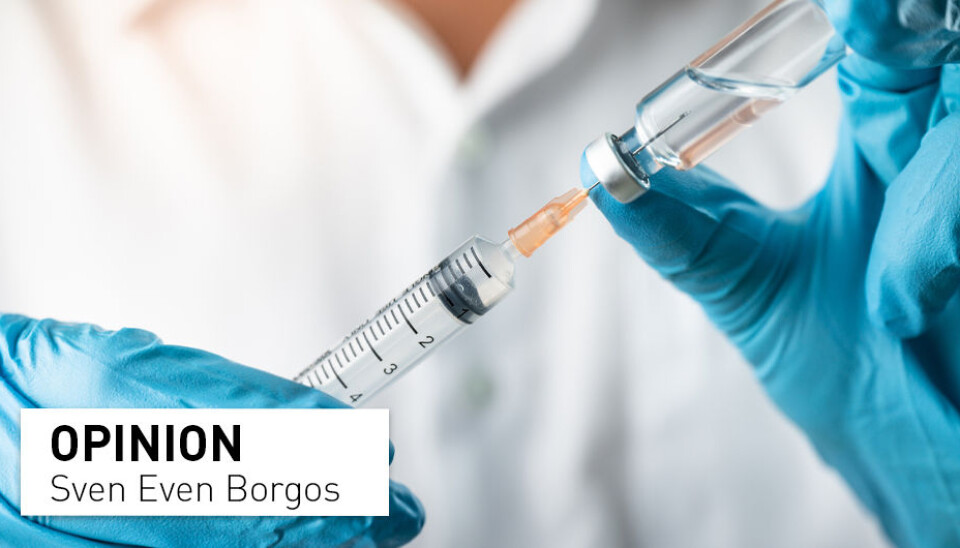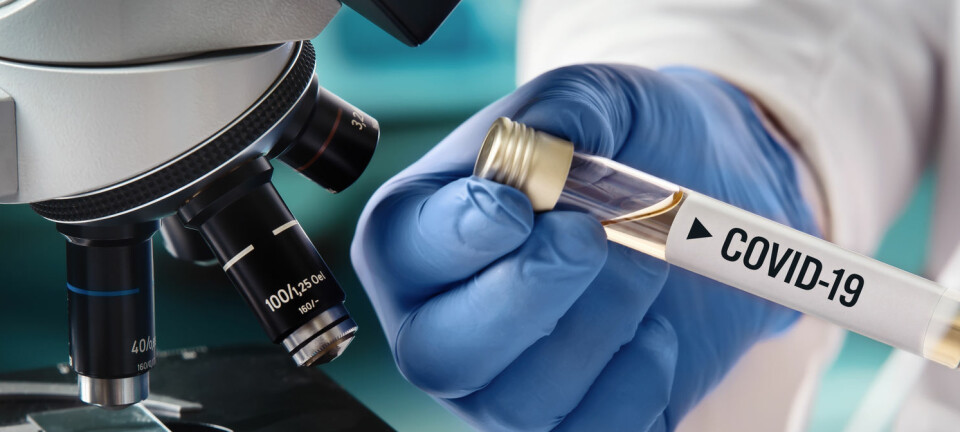Opinion:

A revolution in vaccine development – but will we all benefit?
OPINION: By manipulating the “instruction manuals” that control cell function in our bodies, we will soon be able to combat many diseases, including the new coronavirus outbreak. But in the worst-case scenario, such innovations will only benefit the rich.
In the early days of the Covid-19 epidemic, it was reported that the US company Moderna could have a vaccine against the new coronavirus ready for testing on animals within one month, and on humans within three months. In the end they did it even faster; the first batch for human testing was ready in 42 days. This process normally takes several years, but innovative vaccine technology can do the job at record speeds.
The new technology makes use of mRNA which is short for messenger RNA. These carry nucleic acids – the chemical “building blocks” of life. RNA represents a family of molecules that is structurally similar to DNA, but whose function is slightly different. Messenger RNA acts as a temporary “working copy” of the genes (made of DNA) that our bodies have to read and translate in order to make the proteins that control the life processes taking place in our cells; if the genes are the encyclopedia, then mRNA is more like the hand-written notes that you make when you need to go shopping.
Research and development in mRNA therapy is being carried out at breakneck speed, and although top-level universities like MIT, Harvard and Yale are working on it, the path to market is largely in the hands of a small number of young, private sector pharmaceutical companies, such as Moderna, BioNTech and CureVac. This can be worrying from a public health perspective.
Extremely expensive – and exclusive?
As is the case with currently available medicines that contain other forms of RNA, for instance the drug Spinraza that was introduced in Norway in 2018, drugs based on mRNA could become extremely expensive. This is largely due to the complexity of the drugs and the production processes. For vaccines, the price question could be even more worrying as the full beneficial effect can only be achieved if a significant proportion of the population is treated, to achieve so-called 'herd immunity'.
A stark reminder came a few days after Covid-19 had arrived in the US, as the Trump administration reportedly tried to pay the German mRNA vaccine company CureVac $1 billion to move their research to the US. Although reports are conflicting, there were claims arising that this was done in an attempt to develop a vaccine exclusively for Americans. With the 2020 US presidential election coming up and with the unscrupulous history of the sitting president, this does not seem completely unthinkable.
Major room for improvement
The development of a traditional antiviral vaccine usually begins with the isolation of the whole or parts of a pathogenic virus, which is then caused to be more or less inactive. It is then injected into the body in order to stimulate a required immune response.
This strategy has worked since the end of the 18th century, when the first smallpox vaccine was developed, and it is still saving literally millions of lives every year.
But current approaches to vaccine development are complicated and characterized by a lot of uncertainty and a great deal of testing – all of which takes time. There is, in other words, major room for improvement.
Moreover, viruses used in vaccines must be designed to achieve exactly the appropriate level of virulence that stimulates the desired immune response. If the stimulation is too mild, the vaccine will have no effect. If it is too strong, the recipient will become ill.
Many of our current vaccines also contain traces of the compound formalin, which in some few cases cause allergic reactions. But formalin can be eliminated if we use mRNA-based vaccines.
So what is the secret?
Instruction manual for our bodies
Messenger RNA is effectively an “instruction manual” that our cells refer to in order to make proteins. Proteins are essential for all life processes, such as the assimilation and processing of nutrients in our bodies, as well as the breakdown of harmful substances and bodily renewal.
Most common medicines act by changing protein functions. However, these changes are commonly imprecise – with side-effects that can be anything from insignificant to life-threatening.
Messenger RNA is made up of four nucleic acid components abbreviated to A, U, C and G. The sequence of these components is read by the cells like the instructions in a cooking recipe. If the mRNA instructions cannot be read, its message will have no effect and so no side-effects will develop. But if the message is read correctly, the body will make exactly the right kinds of proteins it needs – no more and no less, at the right time and in the right place.
Vaccines and other medicines based on this process thus open the door to amazing possibilities.
As soon as the genetic make-up of a new virus has been mapped, we can code its key fragments into a synthetic mRNA molecule and deliver it to the body as a vaccine.
The body uses the instructions in the vaccine to make a new protein. The immune system reacts to this protein, but its protective response progresses without any risk of infection. In this way, the body makes itself ready to combat the virus (or bacterium) when it makes its appearance.
From combating cancer to creating vaccines
The challenge we face is two-fold.
Firstly, the manufacture and handling of mRNA is very demanding; these are long, complex and very fragile molecules that can easily be degraded, and they need to be produced with very tight quality control and complex purification processes.
Secondly, it has proved difficult to deliver the genetic “working copies” intact to the locations within our cells where they perform their function; our bodies have several barriers and protective mechanisms in place to prevent 'outside' mRNA from entering.
However, scientists have overcome these problems by packaging mRNA molecules into lipid-based nanocapsules – thus opening the way for the treatment of a whole range of diseases. Once we understand the underlying mechanisms of a given disease, the path to an effective drug treatment can be short.
The list of potential applications ranges from drugs to combat cancer, hereditary genetic disorders and neurological diseases, to vaccines against infections.
At SINTEF, we are working on the use of nanoparticulate mRNA in the treatment of so-called triple negative breast cancer, which is one of the most lethal forms of the disease. This work is part of a European project called EXPERT that is funded by the EU with NOK 150 million. This research is still years away from patients, but a clinical trial in humans is planned for the fifth year of the project.
Public sector involvement is key
The flipside of this story is the expected high costs associated with RNA drug treatments – the exact scale of this remains to be seen when the first mRNA drugs hit the market in the next few years. With the prospect that mRNA therapies could revolutionize large parts of human medicine, this issue becomes pressing.
If everyone, including the poorest in society, is going to take part in the health revolution promised by mRNA technology, research must take place across all sectors and should not be restricted to private enterprise.
But this will require the public sector, both in Norway and globally, to invest in this technology.
By prioritizing and consolidating global public sector investment in research in this field, it may be possible to prevent the monopolization of mRNA drug manufacture by market-driven private enterprise.
For vaccines, needing to reach large populations and often in developing countries, the discrepancy could become critical between commercial price levels – ensuring return-on-investment for private companies and stockholders – and affordable vaccines for vulnerable groups. Public, collaborative research and development efforts seems to be only way we can efficiently address this.
Only then can mRNA technology be applied for the benefit of all – in line with UN sustainability goals.
Share your science or have an opinion in the Researchers' zone
The ScienceNorway Researchers' zone consists of opinions, blogs and popular science pieces written by researchers and scientists from or based in Norway. Want to contribute? Send us an email!








